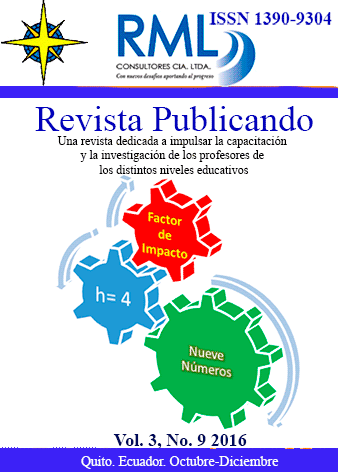Abstract
Este artículo proporciona una revisión de literatura de la historia de la teoría de juegos y sus pronósticos, así como también modelos mentales y emociones estratégicas aplicadas en las instituciones económicas y la sociedad en general. El hilo común en este trabajo es referirse a las teorías en la administración estratégica empresarial basada en la teoría de juegos para de esta manera tener una comprensión profunda de la aplicabilidad de estas teorías en los mercados competitivos.
References
Akiyama, E., et al.Kaneko, K. (2012). Dynamical systems game theory ii a new approach to the problem of the social dilemma. Physica 36–71.
Araujo, R., et al.Almeida de Souzab, N. (2010). An evolutionary game theory approach to the dynamics of the labour market: A formal and informal perspective. Structural Change and Economic Dynamics, 101–110.
Arrow, K. (2003). Introductory remarks on the history of game theory. Games and Economic Behavior, 15–18.
Attanasi, G., Battigalli, P., et al.Manzoni, E. (2016). Incomplete-information models of guilt aversion in the trust game. Management Science 1-20.
Binmore, K. (2007). The origins of fair play. Proceedings of the British Academy, 151–193.
Binmore, K. (2010). Game theory and institutions. Journal of Comparative Economics, 245–252.
Chen, Y., Su, X., et al.Zhao, X. (2012). Modeling bounded rationality in capacity allocation games with the quantal response equilibrium. Management Science, 1952–1962.
Deb, J., et al.Kalai, E. (2015). Stability in large bayesian games with heterogeneous players. Journal ofEconomicTheory, 1041–1055.
Gans, J., et al.Ryall, M. (2016). Value capture theory: A strategic management review. Management Science 1-40.
Geisler, C. (2014). Strategic factor markes, scale free resourses, and economic performance: The impact of product marker rivalry. Strategic Management Journal, 1826–1844.
Goodwin, P. (2012). F orecasting games: Can game theory win? International Journal of Forecasting, 369–374.
Hart, C. (2003). Doing a literature review. Releasing the social science research imagination. London: SAGE Publications.
Ho, T., Lim, N. T., et al.Cui, T. (2010). Reference dependence in multilocation newsvendor models: A structural analysis. Management Science, 1891–1910.
Keyhani, M., Le ´vesque, M., et al.Madhok, A. (2014). Toward a theory of entrepreneurrial rents: A simulation of the market process Strategic Management Journal, 76-96.
Levinthal, D., et al.Wu, B. (2010). Opportunity costs and non-scale free capabilities: Profit maximization, corporate scope, and profit margins. Strategic Management Journal, 780–801.
Machi, L., et al.McEvoy, B. (2009). The literature review: Six steps to success. Thousand Oaks,CA: Corwin Press.
Marquina, P., Alvarez, C., Guevara, D., et al.Guevara, R. (2013). Revisión de literatura esquema Documento de trabajo con esquema para el desarrollo del Trabajo de Investigación Final-Tesis, modalidad Revisión de Literatura, en CENTRUM Católica. Lima, Perú.
Mí¤s, M., et al.Nax, H. (2016). A behavioral study of “noise” in coordination games. Journal ofEconomicTheory, 1-14.
Novak, J., et al.Gowin, D. (1984). Learning how to learn. New York: Cambridge University Press.
Rustichini, A., et al.Villeval, M. (2014). Moral hypocrisy, power and social preferences. Journal Economic Behaviour and Organization, 10–24.
Steward, M., et al.Lewis, B. (2010). A comprehensive analysis of marketing. Journal of Marketing Education, 75-92.
Winter, E., Winter, L., et al.García, I. (2016). Mental equilibrium and strategic emotions. Management Science, 1-17.
You are free to:
Share — copy and redistribute the material in any medium or format.
Adapt — remix, transform, and build upon the material.
The licensor cannot revoke these freedoms as long as you follow the license terms.
Under the following terms:
Attribution — You must give appropriate credit, provide a link to the license, and indicate if changes were made. You may do so in any reasonable manner, but not in any way that suggests the licensor endorses you or your use.
NonCommercial — You may not use the material for commercial purposes.
ShareAlike — If you remix, transform, or build upon the material, you must distribute your contributions under the same license as the original.
No additional restrictions — You may not apply legal terms or technological measures that legally restrict others from doing anything the license permits.
